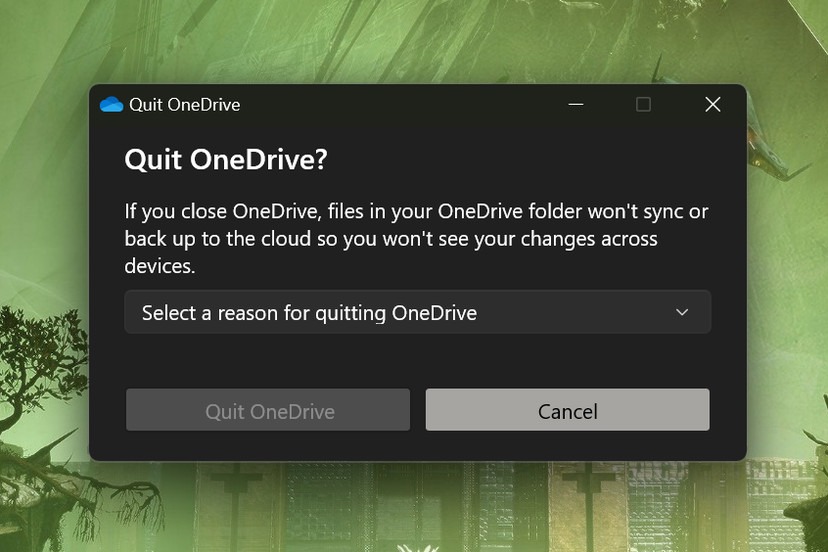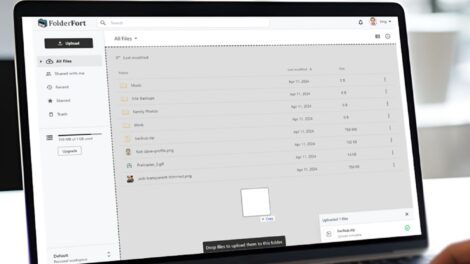Microsoft recently revealed that an upcoming update for OneDrive on Windows will stop the service from sending notifications when users close the app. Currently, OneDrive displays a popup reading “OneDrive is still running in the background to keep your files safe and sync” when shut down.
In this in-depth guide, we’ll cover Microsoft’s rationale behind retiring this notification, including:
- Why the notification is unnecessary with OneDrive’s deeper OS integration
- How removing it aims to reduce clutter and improve performance
- What users can expect from the change in experience
- Instructions to disable the alert currently if desired
- Tips for monitoring OneDrive’s sync status without notifications
- Broader shifts in OneDrive’s evolution into a transparent background process
- Comparison to notifications in other syncing apps and services
- Questions around potential user confusion
- Microsoft’s path to simplifying and streamlining OneDrive
For most Windows users, removing the closed app alert will have minimal impact day-to-day. But it represents a noteworthy milestone in Microsoft’s overarching vision for transforming OneDrive into an intrinsic cloud storage layer across devices and services.
Why OneDrive No Longer Needs a Closed App Notification
The “OneDrive is running in the background” popup originated years ago when the sync client operated more like a standalone app requiring active management. At the time, the notification provided helpful confirmation that files would still sync properly despite closing OneDrive.
However, Microsoft has taken great pains over the past few years to evolve OneDrive into a tightly integrated cloud storage backend woven into Windows itself. With modern OS-level sync integration, OneDrive runs silently in the background without ongoing interaction. This makes the closed app notification obsolete:
- Seamless OS integration – Modern OneDrive exists as a native extension of Windows rather than separate app. Shutting OneDrive no longer impacts core sync capabilities.
- Persistence by design – OneDrive now persists as an always-on background system process rather than something that needs launching.
- Reliable autosync – Modern sync reliably continues data transfer even if the OneDrive app isn’t open thanks to robust OS integration.
- Redundant status icons – Separate tray icons that persist when closing OneDrive also indicate ongoing background sync status.
With OneDrive now deeply embedded into Windows itself, the popup simply duplicates existing indicators. Removing it streamlines the modern OneDrive experience for consumers.
How Removing the Notification Improves User Experience
Beyond being redundant, Microsoft notes that eliminating the alert provides a few notable improvements:
Reduces Screen Clutter
One less popup notification reduces distraction and on-screen clutter while using Windows and other apps.
Improves Performance
Not displaying resource-intensive notifications slightly optimizes sync performance by freeing up system resources.
Reflects OS Integration
Lack of notifications better aligns OneDrive with a seamlessly integrated OS-level cloud storage service.
Simplifies Multi-App Use
Prevents unnecessary distractions when shutting OneDrive to focus on using other applications.
Provides Cleaner Exit Experience
Closing OneDrive just returns to the desktop rather than showing a modal popup.
While a minor change, removing the alert brings OneDrive’s closed experience more in line with its modern OS- and cloud-centric capabilities.
What Users Can Expect from the Change
For most consumers, the removal of the OneDrive closed notification will have minimal practical impact and just make using Windows feel cleaner:
- Sync works the same – Core file syncing carries on identically without notifications. Shutting OneDrive does not disrupt transfers.
- Tray icons remain – Existing white, green, and blue system tray icons persist to indicate sync status, now without the popup overlay.
- Access is the same – OneDrive files remain accessible in File Explorer and Windows apps just like before.
- App can still open – Users can still launch the standalone OneDrive app if desired for preferences and advanced tools.
- Documents save to OneDrive – Default storage location for files doesn’t change ‒ closed app or not, new saves go to OneDrive.
Essentially, the only change is the absence of the “OneDrive is running…” confirmation popup when closing the app. Behind the scenes functionality remains unaffected.
How to Manually Disable Notifications Currently
Prior to the upcoming automatic change, users can manually disable the closed app notification now through:
Step 1 – Right click the OneDrive icon in the system tray and select “Settings”
Step 2 – On the “Notifications” tab, uncheck “Show notification when I close the app”
Step 3 – Click “Done” to apply the change
This immediately stops the popup from appearing when shutting OneDrive through the system tray or taskbar.
Monitoring Sync Without Notifications
If you still want visible status on OneDrive’s sync processes without notifications, two options exist:
System Tray Icons – Watch the white, green, or blue icon in the tray area for current sync status.
Task View – Open Task View and check the OneDrive app preview tile for active transfers.
These on-screen indicators persist even with notifications disabled for proactive users who want sync visibility.
Why This Change Makes Sense for OneDrive
Stepping back, the removal of closure notifications highlights how Microsoft is optimizing the broader OneDrive experience for simplicity and transparency:
Reflects Set-and-Forget Vision
The change embraces OneDrive as a seamless background process rather than foreground app requiring monitoring.
Mirrors Reliable Auto Save
OneDrive already auto saves files silently without confirmations like legacy sync tools. This follows similar thinking.
Embodies OS-Level Integration
Lack of notifications and interactions presents OneDrive storage as an intrinsic component of Windows itself.
Subtle User Education
Training users to think of OneDrive as persistent and unobtrusive even when not visibly active benefits adoption.
Differentiates from Early Sync Tools
It departs from old sync clients requiring constant vigilance and troubleshooting.
Marking the end of desktop closure alerts is a noteworthy milestone in the maturity of OneDrive’s cloud-centric, set-and-forget approach to storage.
How Other Sync Apps Handle Closed-App Notifications
It’s interesting to note how other prominent syncing services handle app closure differently:
- Dropbox – Briefly shows popup before minimizing to tray icon.
- Google Drive – Displays persistent splash screen with “Still syncing…” message.
- iCloud – No notification; closed app interrupts photo sync until reopened.
This highlights design inconsistencies even among top providers. By removing alerts, Microsoft arguably offers the cleanest and most seamless experience for windowed OSes like Windows.
Addressing Potential User Confusion
Microsoft acknowledges shutting OneDrive and no longer seeing a confirmation may cause some user confusion initially, but argues the long-term benefits outweigh short-term adjustments:
- Without the popup, users may wonder if OneDrive is still syncing files properly. But system tray icons still provide sync status.
- Some may worry OneDrive needs to remain open at all times. But proper OS integration keeps it persisting and working silently in the background.
- New users who expecttray behavior from other sync apps may need retraining. But eliminating the notification embraces OS-level cloud storage.
- Microsoft Support may see an uptick in questions about the missing alert at first. But as users adjust, this will subside.
Overall, Microsoft is ready to provide guidance for early user questions to smooth the transition towards more invisible, productivity-centric storage.
Microsoft’s Roadmap to Simplify OneDrive
Removing the unneeded closed app notification is just one recent example of Microsoft’s ongoing efforts to refine and simplify OneDrive’s capabilities:
- Ending the Placeholders feature – Discontinued partially synced files in favor of consistent seamless access.
- Retiring the Fetch feature – Focused cloud access on reliable real-time sync rather than on-demand file pulling.
- Culling legacy tray icons – Modernized to a streamlined single icon to reduce confusion.
- Migrating to new sync engine – Under-the-hood overhaul for much-improved stability and performance.
- Adding native M1 Mac support – Enabled full feature parity with Windows version on Apple Silicon hardware.
- Expanding collaborative features – Enhanced teamsharing, commenting, and coauthoring capabilities.
Microsoft’s steady pace of refinements demonstrates their commitment to maturing OneDrive as a powerful yet intuitive cloud storage solution for consumers and businesses alike.
Conclusion
OneDrive’s upcoming removal of closed app notifications may seem minor, but represents meaningful progress in evolving its user experience into a streamlined, productivity-enhancing storage solution. For Microsoft, eliminating redundant alerts in favor of silent background sync reinforces OneDrive’s identity as an intrinsic part of Windows itself rather than just an app.
WhileUsers may need a brief adjustment period without the familiar closure confirmation popup initially. But settling into this cleaner experience will help everyday users conceptualize OneDrive as everpresent cloud storage that “just works” rather than requiring constant vigilance. With this latest improvement, Microsoft takes another notable stride towards OneDrive’s future as an indispensable digital file cabinet silently animating work and play across all devices.










Add Comment